Contents
Wine Tokaj is produced in the region of the same name in Hungary (partially entering the territory of Slovakia). The area is famous for sweet wines made from berries affected by gray mold – the so-called “noble mold”. This drink is so famous that it is even mentioned in the national anthem of Hungary.
Historical information
It is not known for certain when vineyards appeared on the volcanic soils of the Tokay region, but legend claims that the first Tokay wine was made in 1630. In fact, most likely it happened even earlier – in the 1570s.
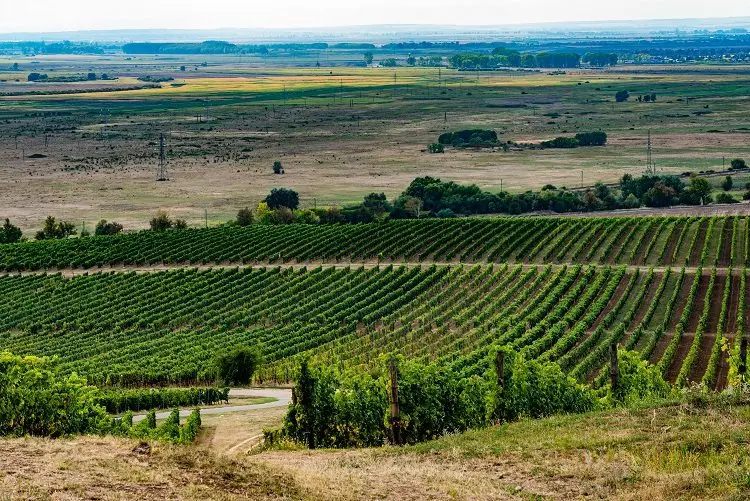
In 1730, all vineyards were sorted into three categories, depending on soil type, climatic conditions, and the amount of gray mold affecting the vines. Accordingly, the wines were labeled first, second or third class.
In 1920, after the collapse of the Austro-Hungarian Empire, a tiny part of the Tokaj wine region became the territory of Czechoslovakia (now Slovakia), while the main area remained in Hungary.
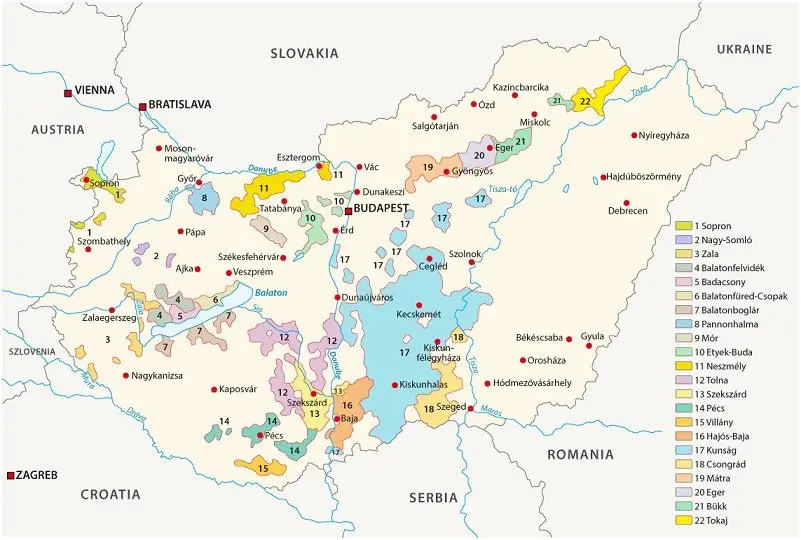
Hungarian wine is called Tokaji (“Tokay”), and it is a name controlled by origin. Wine produced in the Slovak part of the region can be called Tokajský / -á / -é (“Tokay”), but only if it fully meets all Hungarian quality requirements.
Production features
The Tokaj area is located at an altitude of 457 meters above sea level, not far from the Carpathian Mountains. The soil of volcanic origin is saturated with iron and lime. Due to the combination of geographical characteristics, a unique climate has been established here: frosty and windy winters, cool dry springs, hot summers and rainy autumns with a long “Indian summer”.
Tokay wines can only be made from six grape varieties:
- Furmint;
- Harshlevelű (Hárslevelű);
- Yellow Muscat (Yellow Muscat or Sargamuskotaly);
- Zeta (Zeta, autochthonous variety);
- Кёверсёлё (Fat Grapes);
- Kabar (Kabar).
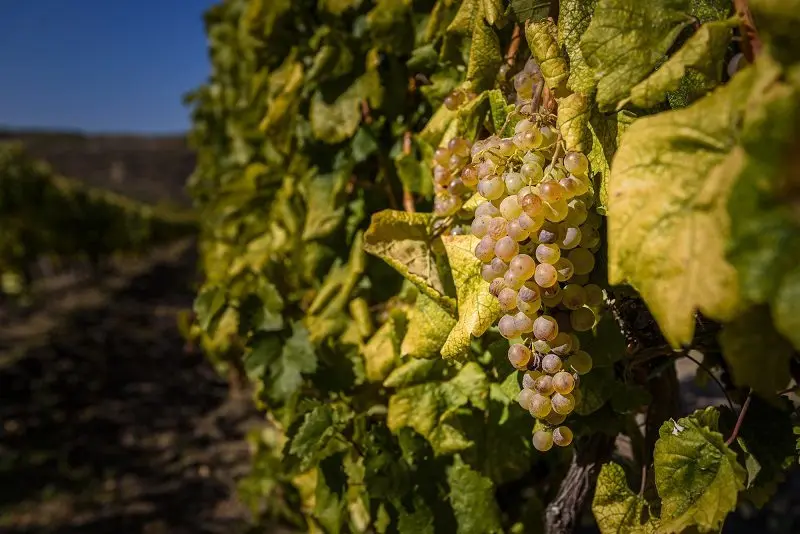
The main variety is Furmint, which accounts for approximately 60%, another 30% for Harshlevel, and only 10% for all other varieties. A wide range of wines are made from these berries, ranging from dry whites to the sweetest wine in the world – Eszencia (“Essence”).
For the production of most Tokay wines, berries are taken, called Asu (Aszú), which are dried grapes raisined in the sun, touched by gray rot fungus. The sun’s rays penetrate deep into the pulp and evaporate most of the liquid, as a result, the grapes become raisined, and the concentration of sugar in the berries increases. All varieties are harvested as ripe as possible, and they wait until gray rot appears on the berries. On average, the region produces about 10 million liters of wine per year.
Types of Hungarian wine Tokaj
Dry wines
A relatively new phenomenon, as the Tokaj region is primarily known for sweet wines. They are made mainly from the Furmint variety, they are distinguished by mineral notes in the bouquet. Connoisseurs say that these brands can be compared with Burgundy and Moselle wines in terms of complexity of taste. Previously, they belonged to the category of ordinary wines, but now Tokai dry wines are usually called according to the grape variety: Tokai Furmint, Tokai Harshlevelu, etc.
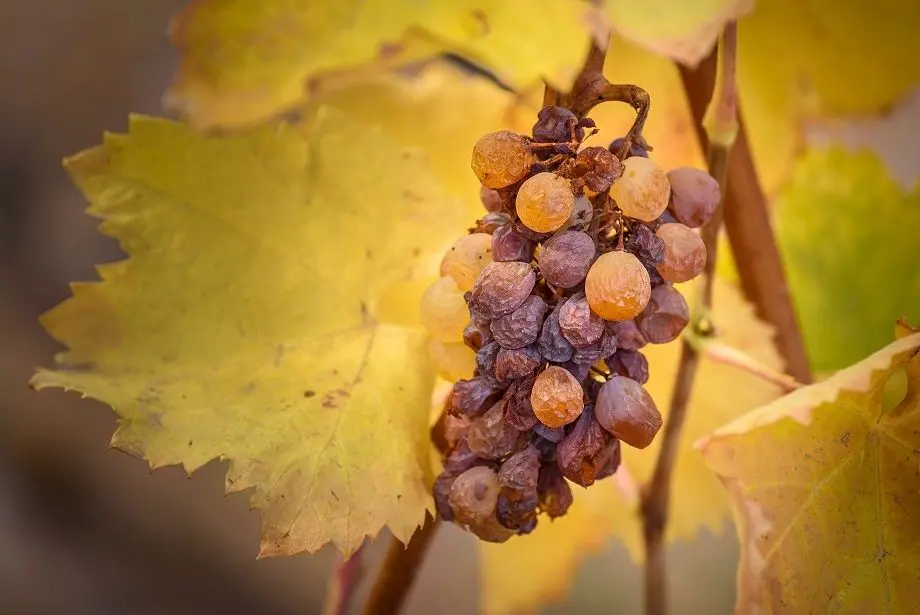
Szamorodni
At first it was called főbor (“first wine”), but already in the 1820s it received its current name. It is made from berries heavily affected by the fungus Botrystis gray (the causative agent of gray rot). More often, the wine turns out to be slightly stronger than analogues (about 14%), it belongs to the category of sweet ones.
Grapes are harvested late, at the end of autumn, and before that the vines are tied up so that the berries become raisined. The finished wine is added to the fermented pulp, and this “blend” is already sent to age in barrels.
Asu
When they say “Tokay” in Europe, most often they mean this particular wine. Despite the fact that the term Aszú is translated from Hungarian as “dry”, it is a sweet drink of bright yellow color. For its manufacture, berries are harvested only of one variety, but in several queues. The first harvest (the very end of summer – the beginning of autumn) goes to the base wine. November is the time for the second harvest. Dried berries are harvested by hand in special baskets “puttons”, ground to a paste state (the so-called “Asu dough”), poured with base wine and left for 1-2 days, stirring occasionally. The mixture is then poured into wooden barrels and left to mature for several years (up to 10).
The sweetness and concentration of the final product depend on the number of puttons included in one barrel, usually this figure varies from 3 to 6 (the more, the sweeter the drink). If there are more “baskets”, such wine is already called “Asu-Essence”. The alcohol content in Asu wines often exceeds 14%.

Essence
Often called nectar, it is considered one of the most exclusive wines, although formally it does not even belong to the category of wine, since the highest sugar content (500-700 g / l) does not allow the fortress to exceed 5-6 degrees. The essence is often added to Asu wines, but sometimes it is sent to the full fermentation process (takes about 4 years), bottled and released to the market as a separate drink. The wine is so sweet that it can be drunk only in small portions, but this type does not lose its aroma, taste and other organoleptic properties even after 200 years of storage.
The production method is low fermentation. For “Essence” only the most ripe and raisined berries are suitable. They are not crushed – the juice flows out under its own weight. There are few raw materials, but they are very concentrated, so the sugar content in the final product can even reach 900 g/l.
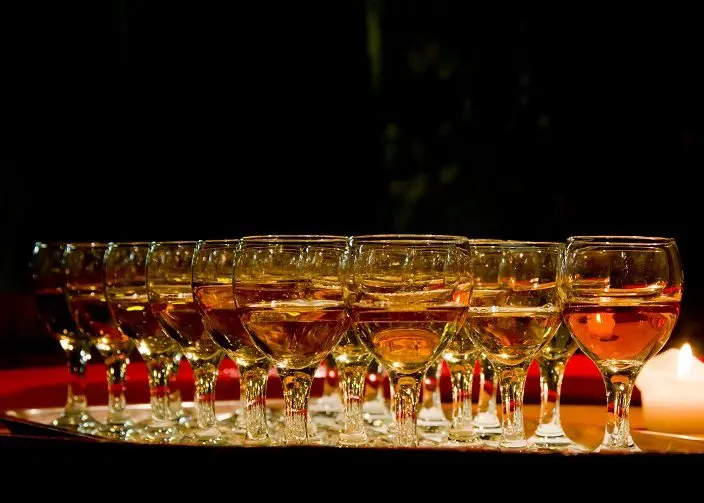
Фордиташ (Translation)
Grape must (unrefined juice) is poured over the pulp (Asu dough), which has already been used once to make wine.
Mashlash (Máslás)
Must pour the yeast sediment from Asu, insist up to a month and a half.
Ice wine
Appeared in 1999, obtained from frozen berries.
How to drink Tokaj wines
Sweet white wines, including Tokai, are served in small pot-bellied glasses, as you can’t drink a lot of dessert alcohol. They can be chilled to 11-14°C or served at room temperature. Tokay wines are eaten with fruits, nuts, cheeses, desserts and fish. “Essence” is not accepted to eat.
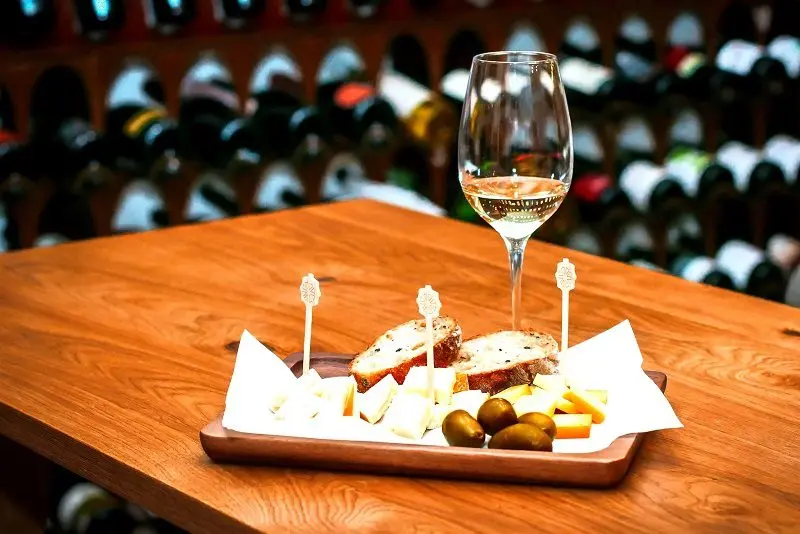
Tokaj is one of the few wines that does not have to be drunk to the end. An open bottle can be corked, hidden in the refrigerator and taken out as needed. The increased sugar content will prevent the drink from spoiling and running out of steam for at least a couple of weeks, and in the case of Essence, for several months.









